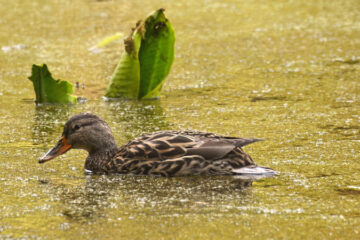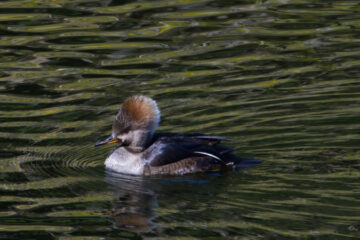
Little Cranberry Lake, Big Beaver Pond, Wildlife
I went on a short hike checking out the Beaver Ponds with Bob Jepperson . We had a great short walk in the area to see what was moving about. The walk with Bob was highly informative. I now have a better understanding of the dynamics and stewardship within the ACFL.
It turned out to be an enjoyable day for photographing wildlife. Bob did lose track of me several times. When I see something interesting that could be a magical moment, I am off quickly without notice. I captured a magical moment with a beautiful male Wood Duck.
If you see a photographer that is completely ignoring you and has a camera stuck to his eye. There is a good chance it is me fixated on a possible magical moment or doing my “wait for it”.
Please understand that I am not rude, just extremely focused when it comes to wildlife. Being out with nature is my happy place and I get immersed in my happy place.

Mallard, Male
This is a fitting example of my “wait for it” magical moment. I had seen the lighting conditions were outstanding. I just need the Mallard to swim into the perfect place. The timing is critical because moments like this do not last long, you have a matter of seconds to capture it. That is why one’s eye gets stuck to the camera!
View more magical “wait for it”
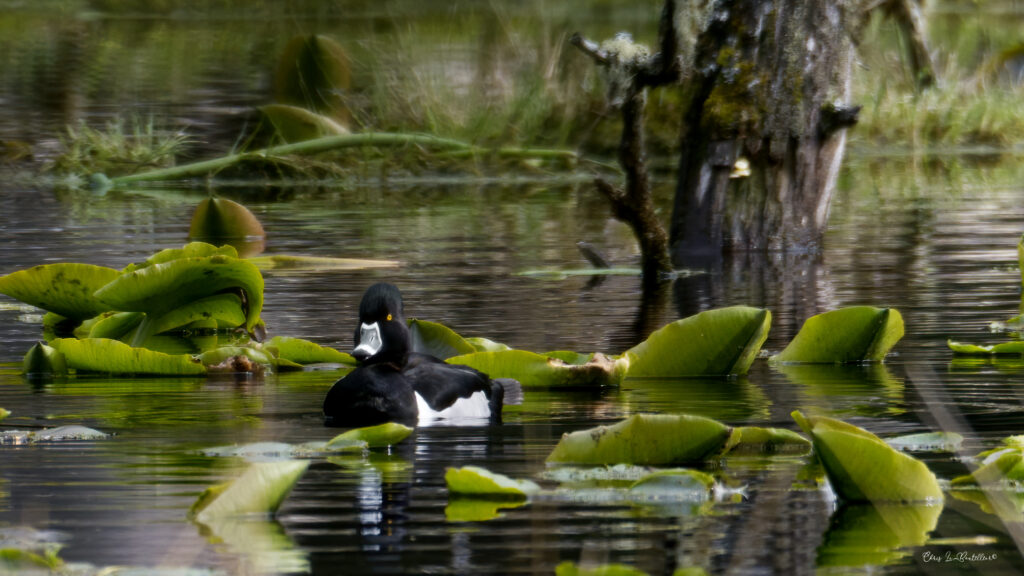
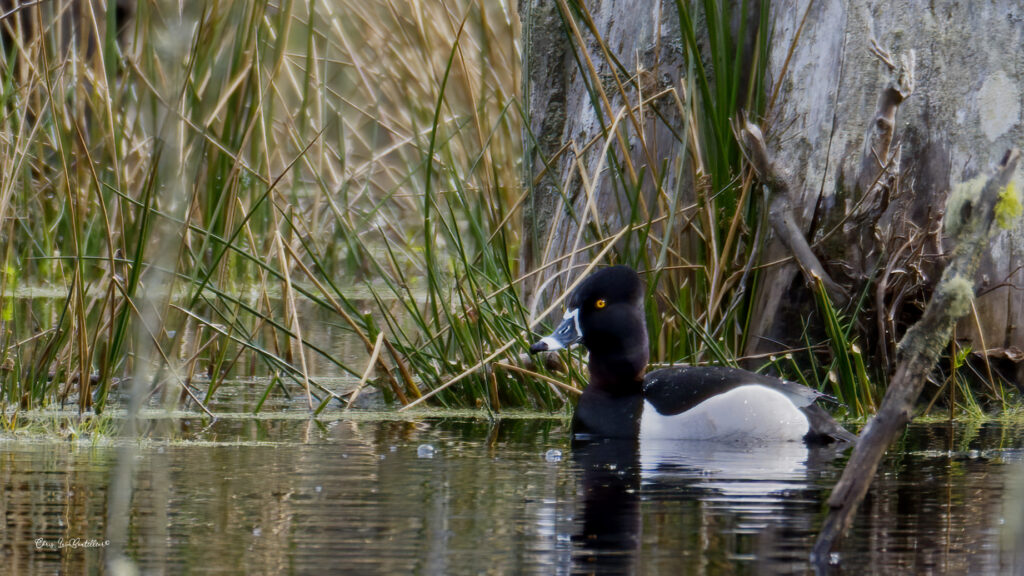
Ring-necked Duck
I located the Ring-necked Duck in several locations on our hike. It is an exceptionally beautiful bird with stunning eyes.
More about the Ring-necked Duck
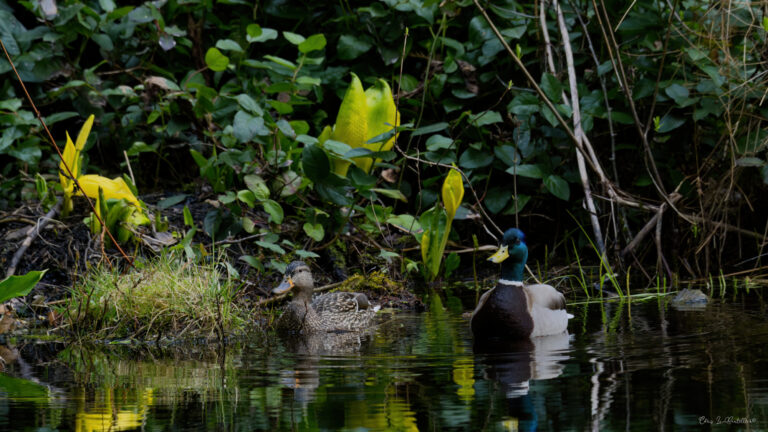
Mallard Nesting Pair
Mallards nest on the ground, usually near water. They prefer to nest in areas with dense vegetation, such as tall grass or shrubs, to help conceal their nests from predators. The female mallard will build her nest by scraping out a shallow depression in the ground and lining it with grasses, leaves, and other materials. She will typically lay between 6 and 12 eggs, which she will incubate for on average of about 28 days. Once the eggs hatch, the female mallard will lead her ducklings to water, where they will learn to swim and feed.
Don’t disturb the ducks. Once mallards have nested, please be sure not to disturb them. Disturbing the ducks or their nests can cause them to abandon their eggs or young.
If you find a Mallard pair nesting or with young it is best to sit quietly and at a respectful distance to observe them.
Please do not feed the wildlife in the ACFL.

The Mallard Pair
I observed this Mallard pair for some time as they moved about close to their nesting area. They were a substantial distance from where I was and still on alert. The area they are using is well-protected and away from trail interruption.
If you are boating, please respect their space and stay away from their nesting area.
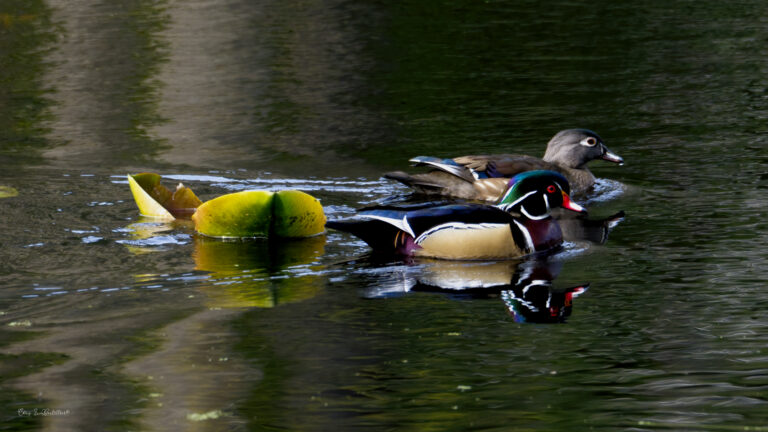
Wood Duck Pair, Male, and Female
A beautiful pair of Wood Ducks checking out the area.
More about the Wood Duck
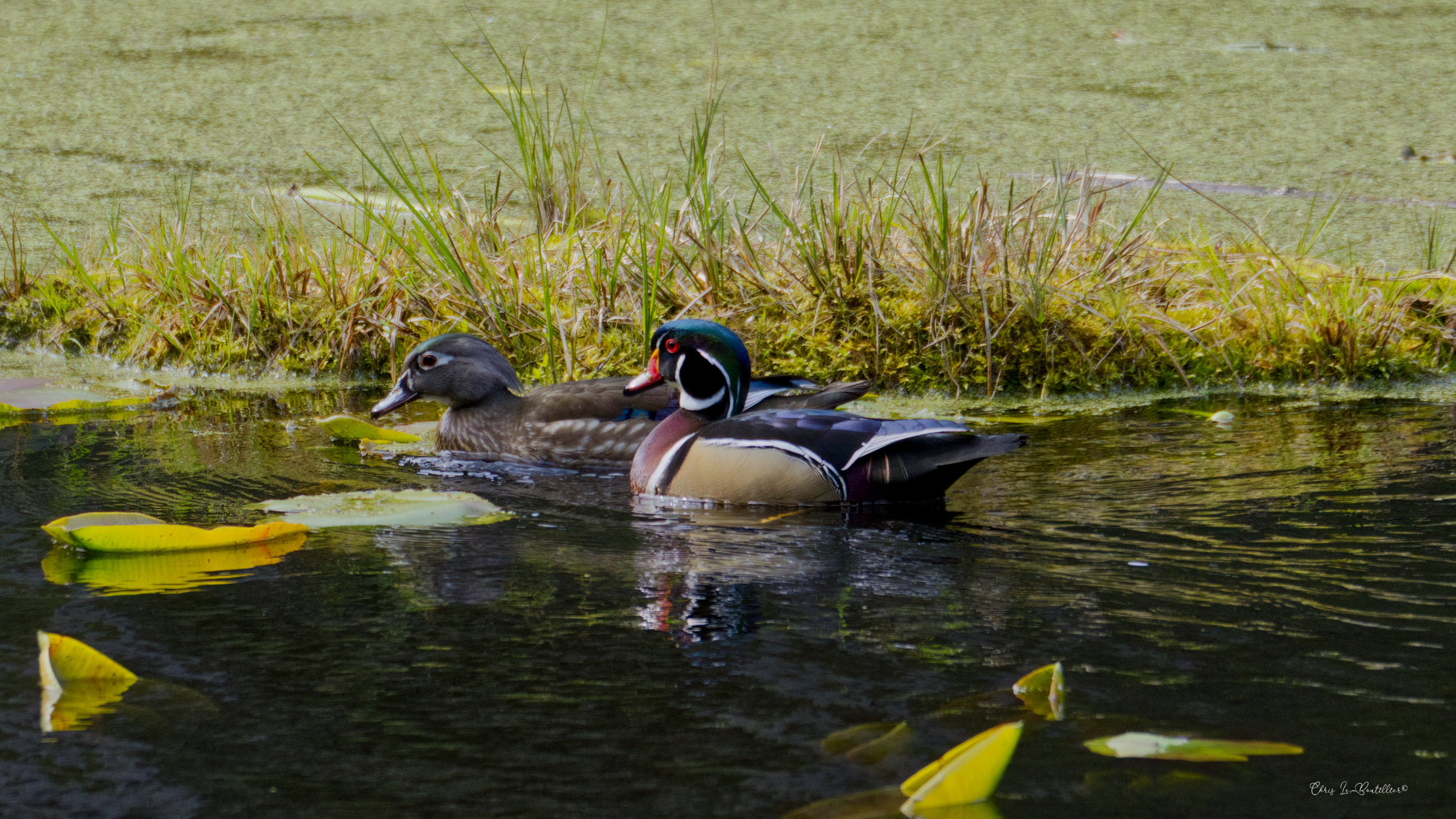
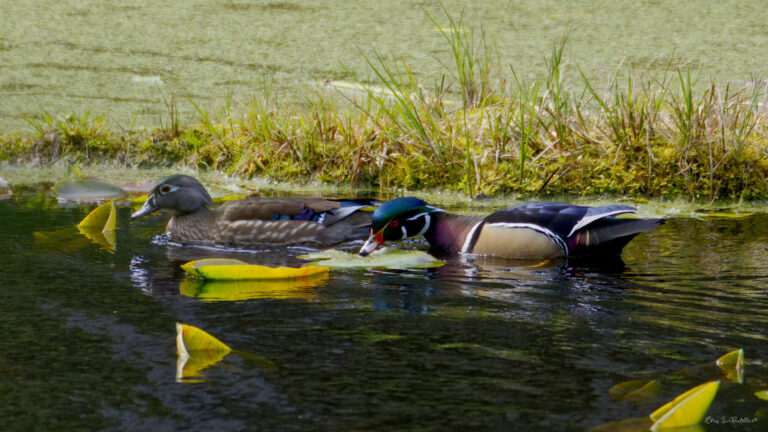

Western Skunk Cabbage
The Skunk Cabbage is starting to show up everywhere, spring is coming!
Interesting Information: Western Skunk Cabbage
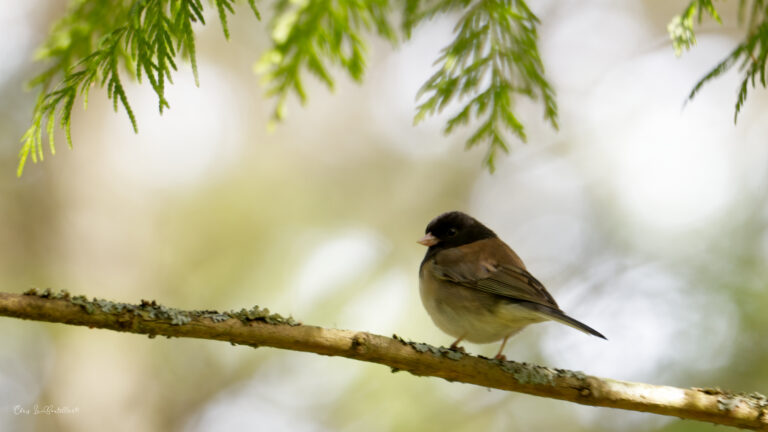
Dark-eyed Junco
The Dark-eye Junco has beautiful coloring and a wonderful call. Use the link below to learn more about them.
More about the Dark-eyed Junco
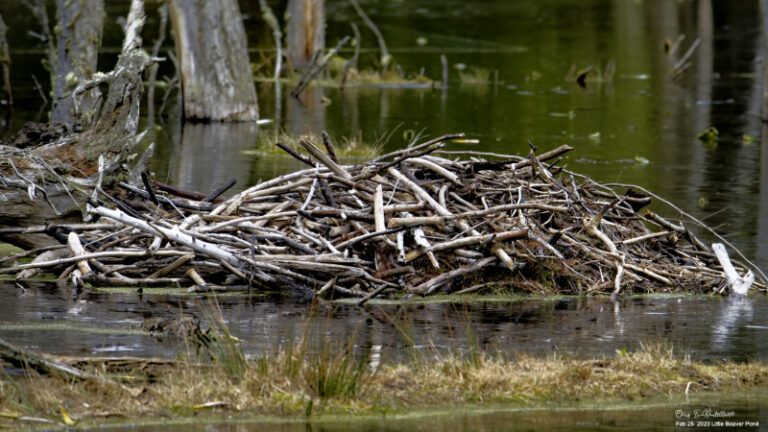
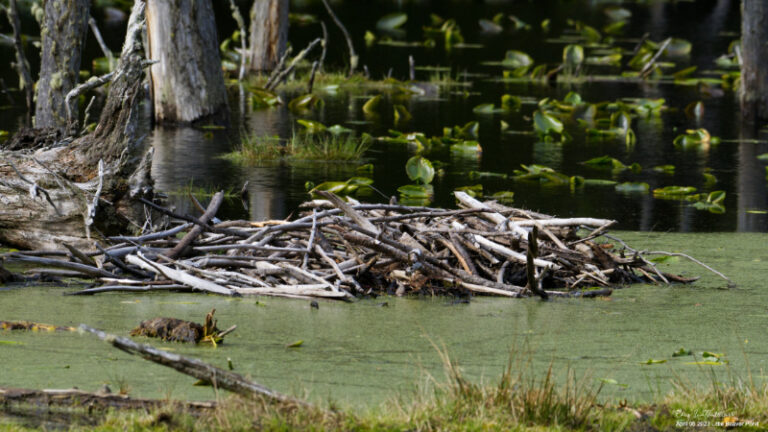
Beaver Lodge
While we were out Bob noticed the Beaver Lodge was changing in size from a couple of months ago. I captured an image of it on February 25, 2023, and as you can see the busy beavers are deconstructing the lodge.
Beavers tear down their lodges for a variety of reasons. Sometimes, they may tear down a lodge if it is damaged or if they need to move to a new location. Other times, they may tear down a lodge to build a new one that is larger or more secure.
Here are some of the reasons why beavers might tear down their lodges:
Damage: A lodge may be damaged. If a lodge is damaged, the beavers may tear it down and build a new one.
Relocation: Beavers may need to move their lodge if the water level in the pond or stream where they live changes.
Improvement: Beavers may tear down an old lodge and build a new one that is larger or more secure. This is especially common if the beaver population is growing.
Beavers are very industrious animals, and they are constantly working to improve their homes. If you see a beaver tearing down its lodge, don’t worry.
It’s just doing what busy beavers do.
Bob might have more information about this later.
Little Cranberry Lake, Big Beaver Pond, Little Beaver Pod, Anacortes
04.05.2023
All images are © Chris LeBoutillier
You may obtain images here iNaturlist Chris LeBoutillier and use them as required by the Creative Commons License

